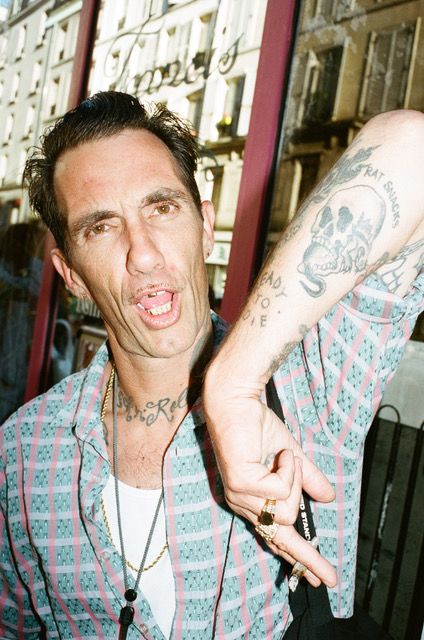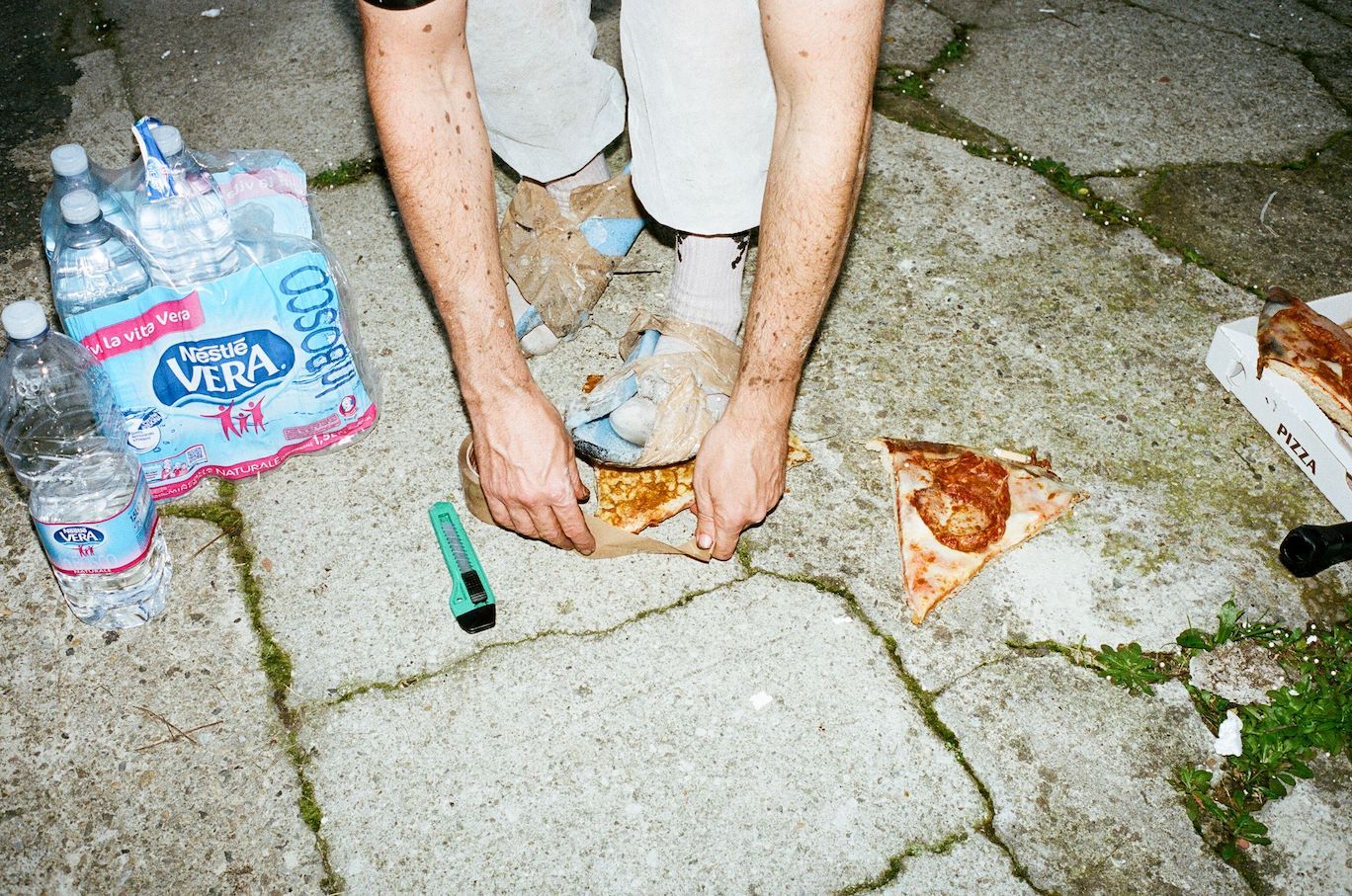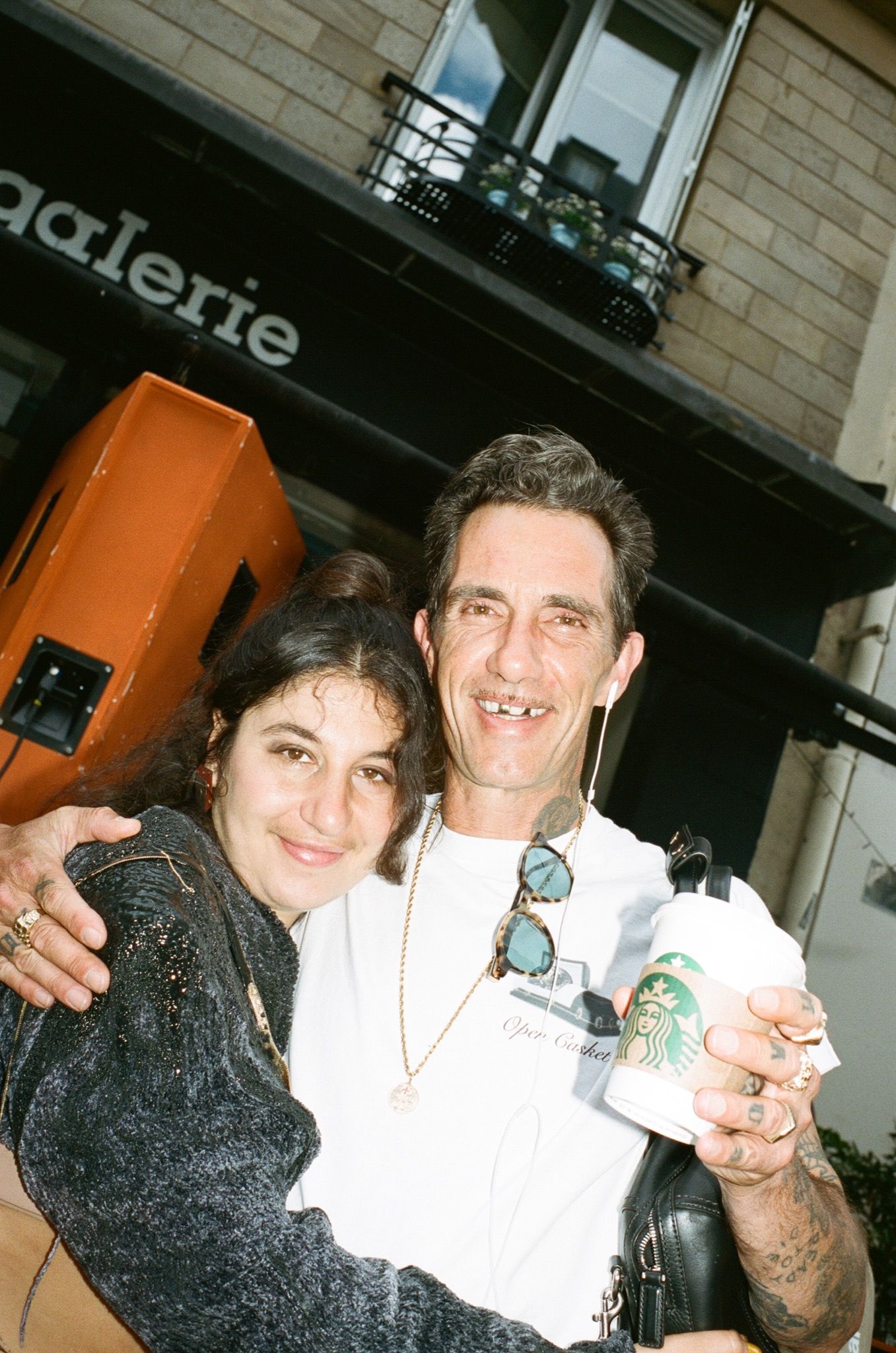CALI THORNHILL DEWITT’s Sweatshirts “Pour One Out” for BIGGIE SMALLS, MASSIMO VIGNELLI, and ROMY SCHNIEDER
Artist Cali Thornhill DeWitt’s assemblages are the gutter’s response to TMZ. Borrowing from the language of mass media—as well as graphic layouts from digital and IRL subcultures—his work advertises the collateral damage of success. Affixed with solemn gothic lettering, DeWitt’s memorial crewnecks are based on vernacular designs made by Los Angeles gangs in the 1980s and 90s. With pieces dedicated to dead cultural icons ranging from Biggie Smalls to Massimo Vignelli, the sweatshirts place a dark veil over the glossy surfaces of fame. They sardonically flirt with the idea that being found dead in a hotel room may be the ultimate fashion statement. Although they look like a razor-sharp obituary for the American dream, DeWitt says that his sweatshirts are in fact an un-ironic tribute: “I have positive feelings towards everyone I make a memorial for. It’s a statement of empathy and respect.”
032c spoke with Cali Thornhill DeWitt in October 2014 to find out more about his practice.
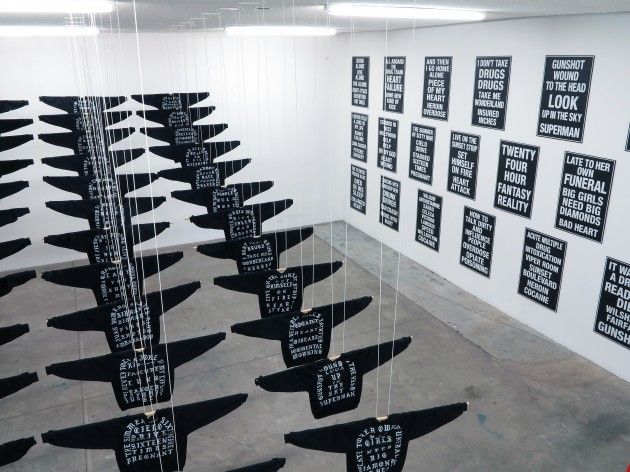
To be honest, it’s difficult to find details about your work on the Internet.
There are a lot of fake names, code names, and secret societies within my crew.
And is that about being secretive? Or is it anti-search engine?
I’m not anti-search engine, but I’m anti-easy. I think creating confusion is the best way to use the Internet.
So how did you get started making your signs?
It started small. I love seeing the direct signage everywhere when I ride my bike around LA. In the past few years, it’s been this corrugated plastic with vinyl lettering advertising burritos, or cheap luggage, everything really. There was no intent at that point to make a few hundred of them, but here we are. I’ve made another 40 this month.
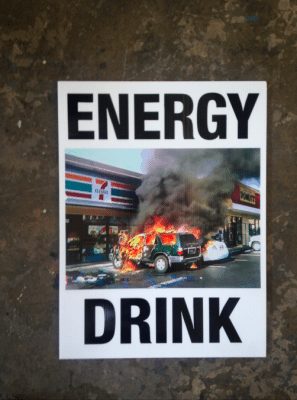
What’s the process like of putting the images together with writing?
That’s usually how I end my day lately, looking for images online that I think would make for better advertising. I have all these folders stuffed with images. And then I read before bed and write down words I like.
So you would say that you’re making your own kind of advertising?
Yeah, I think of them as advertisements.
And what are they selling?
They’reselling things you can’t buy, things that many people already have—dishonesty, hatred, American tragedy. But they’re also meant to be funny.
They do have a certain morbid comedy to them. And, what’s more, they have the same graphic layout as a meme. Was that intentional?
It was subconsciously intentional. My main goal is to be direct.
Would you describe yourself as an artist? A designer? Both? Neither?
I think of what I make as art. It’s the art that I want to see.
How would you describe your influences? On one hand there’s this punk fanzine feel to what you do, but then there’s also this Barbara Kruger type of delivery.
I love Barbara Kruger, but the punk aesthetic and its emotion, that’s my original mind-blow. But that all happened when I was a child. That’s just there, and it continues to be there. I actually really keep up on underground culture to this day, and I am even involved to a certain extent. Last year I made a video and a record cover for Hoax, an incredible Hardcore band—or I will help make shirts, book a show, etc. But so many things hit me on an emotional level, and they basically hit the same button. I don’t really genre-discern.
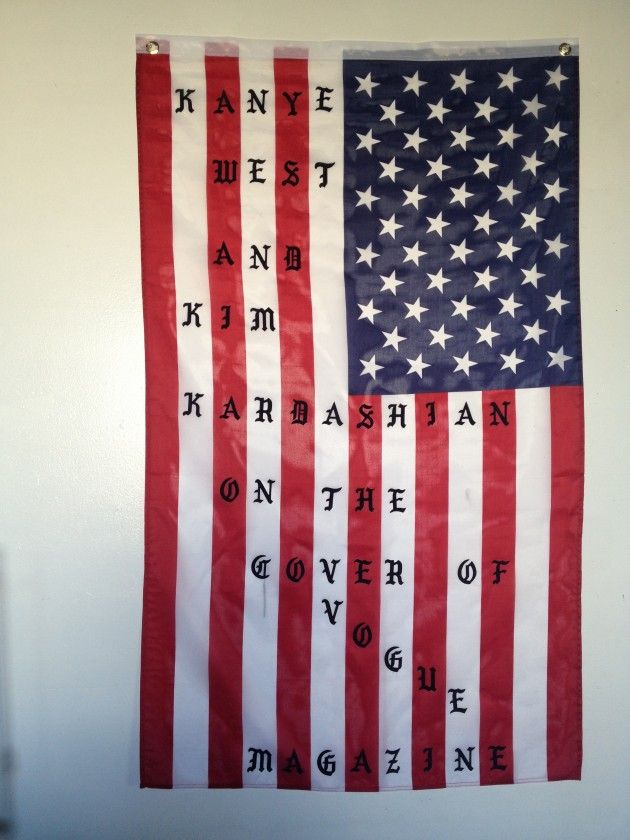
There is a whole mix of genres in what you’re up to. For example, the sweatshirts are more about pop than the underground— about an interplay between fame and death. Is that subject matter a product of being in LA?
Yeah, that’s definitely environmental stuff—ego, celebrity obsession. But those designs are actually based on gang sweatshirts from the 80s and 90s. A gang member would die and people in the gang would make a memorial sweatshirt.
How did you come across that?
Just living in LA. I would go to the swap meets to get them made sometimes. And then a few years ago, I went to a swap meet to get one, and the stall was gone. Then I searched all around South LA, and no one was making them in the classic way anymore—like, they could make you one, but it wasn’t the same font or process. So I panicked, but eventually I found one of the places that make the lettering. It’s a bulk sports lettering place in the Midwest, and they have the iron-on lettering in that gothic font. So I got a heat press, and now I just make the sweatshirts myself.
And are your sweatshirts memorials as well?
A lot of them. But they don’t have to be memorials. They can be tributes to the living as well.
One of them looked like it was for Michael Jackson.
It was. That was from the series I made for the show at Human Resources in LA. It was all memorials for people who died in LA, but I didn’t name them, I just put clues. The Michael Jackson one said, “King of Pop,” so that was an obvious one, but some were more cryptic.
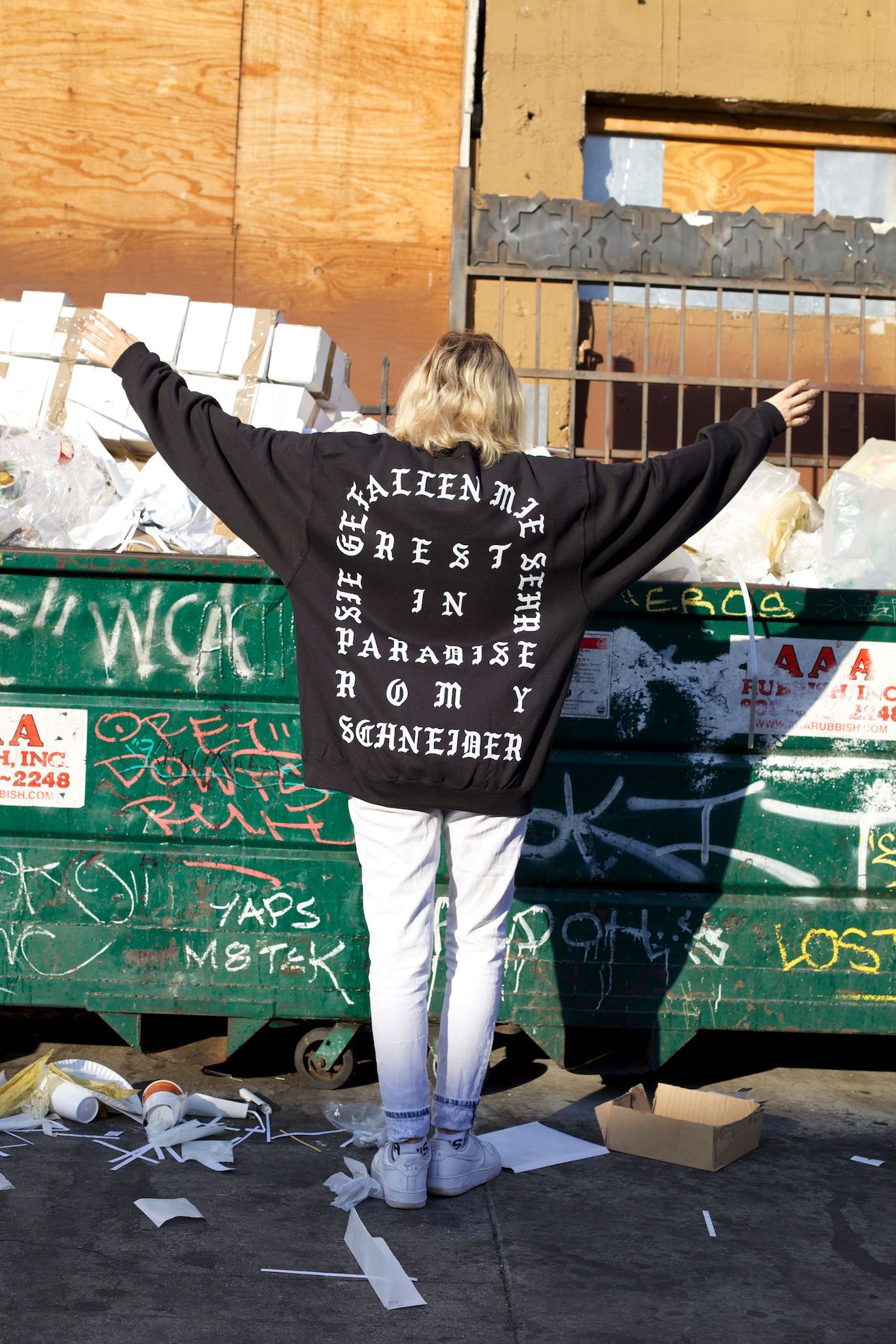
Who else was there?
There were 24 people—Sal Mineo, Whitney Houston, Elizabeth Taylor, Sharon Tate, Biggie Smalls. And, in a way, it’s about living here in LA.
I guess there’s nothing more Hollywood than a benzo overdose.
Yeah, it’s true. But that struggle exists everywhere—the struggle of being devoted to ego.
Cali Thornhill DeWitt’s “Memorial” exhibition at the 032c Vitrine opens February 24, 2015.
